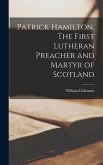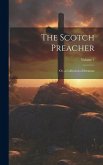Sermons are an invaluable source for our knowledge of religious history and sociology, anthropology, and the mental landscape of men and women in pre-modern Europe, of what they were taught and what they practiced. But how did an individual process the preached message from the pulpit? How exactly do written sermons duplicate the preached Word? Do they at all? The 11 leading scholars who have contributed to this book do not offer uniform answers or an all-encompassing study of preaching in the Reformations and early modern period in Europe. They do, however, provide new insights on Catholic, Lutheran, and Reformed preaching in Western and Central Europe. Part One examines changes in sermon structure, style and content in Christian sermons from the thematic sermon typical of the Middle Ages to the wide variety of later preaching styles. Catholic preaching after Trent proves not to be monolithic and intolerant, but a hybrid of forms past and present, applied as needed to particular situations. Lutheran homiletic theory is traced from Luther and through Melanchthon, the intention of the sermon being to transform the worship service based on exegesis of Scripture. In Reformed worship, the expository sermon, often given on a daily basis with a continuing exegesis, was designed to communicate the tenets of the faith in terms that the laity could understand ("plain style"). Part Two deals with the social history of preaching in France, where preachers often incited their hearers to attack human beings or holy objects or were themselves attacked; in Italy, where preaching became a collective and "home-grown" product; in early modern Germany, where the authorities strove for uniformity ofpreaching practice and the preacher was seen as a moral guardian; in Switzerland, where leaders from Zwingli on sought to bring religious practice, conduct, and government in line with biblical teaching and propagated a pastoral vision of preaching; in England, where after the








